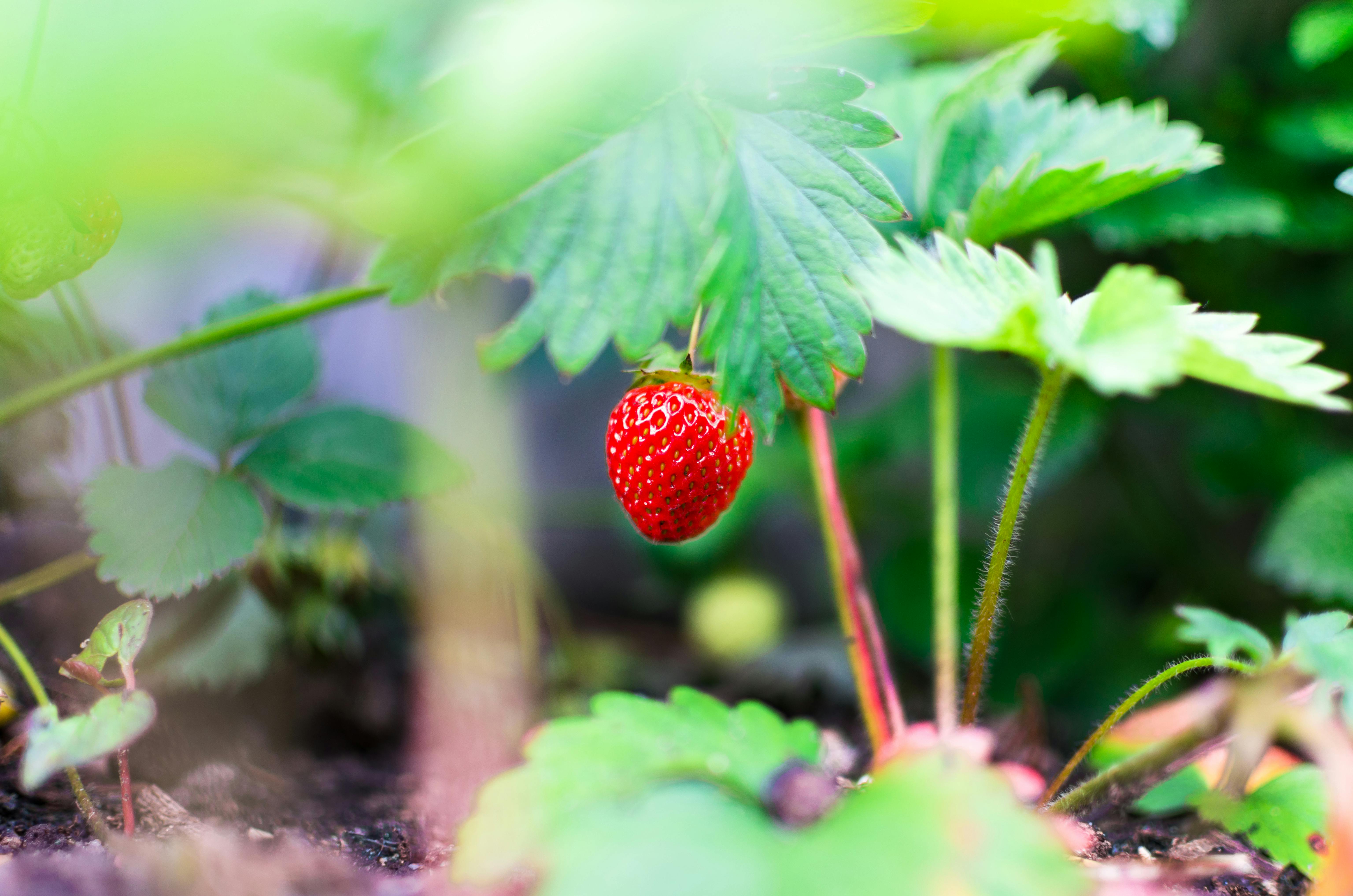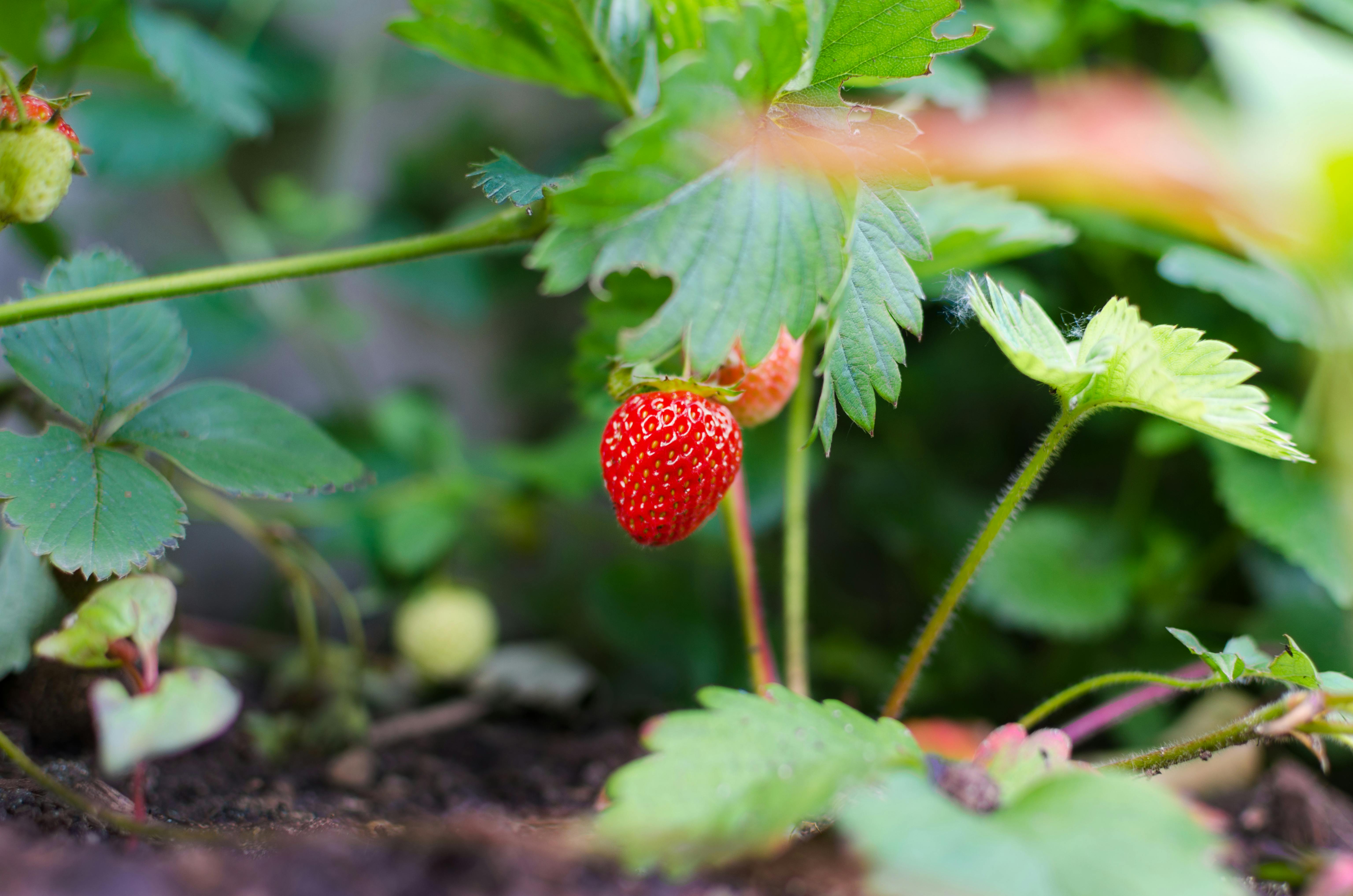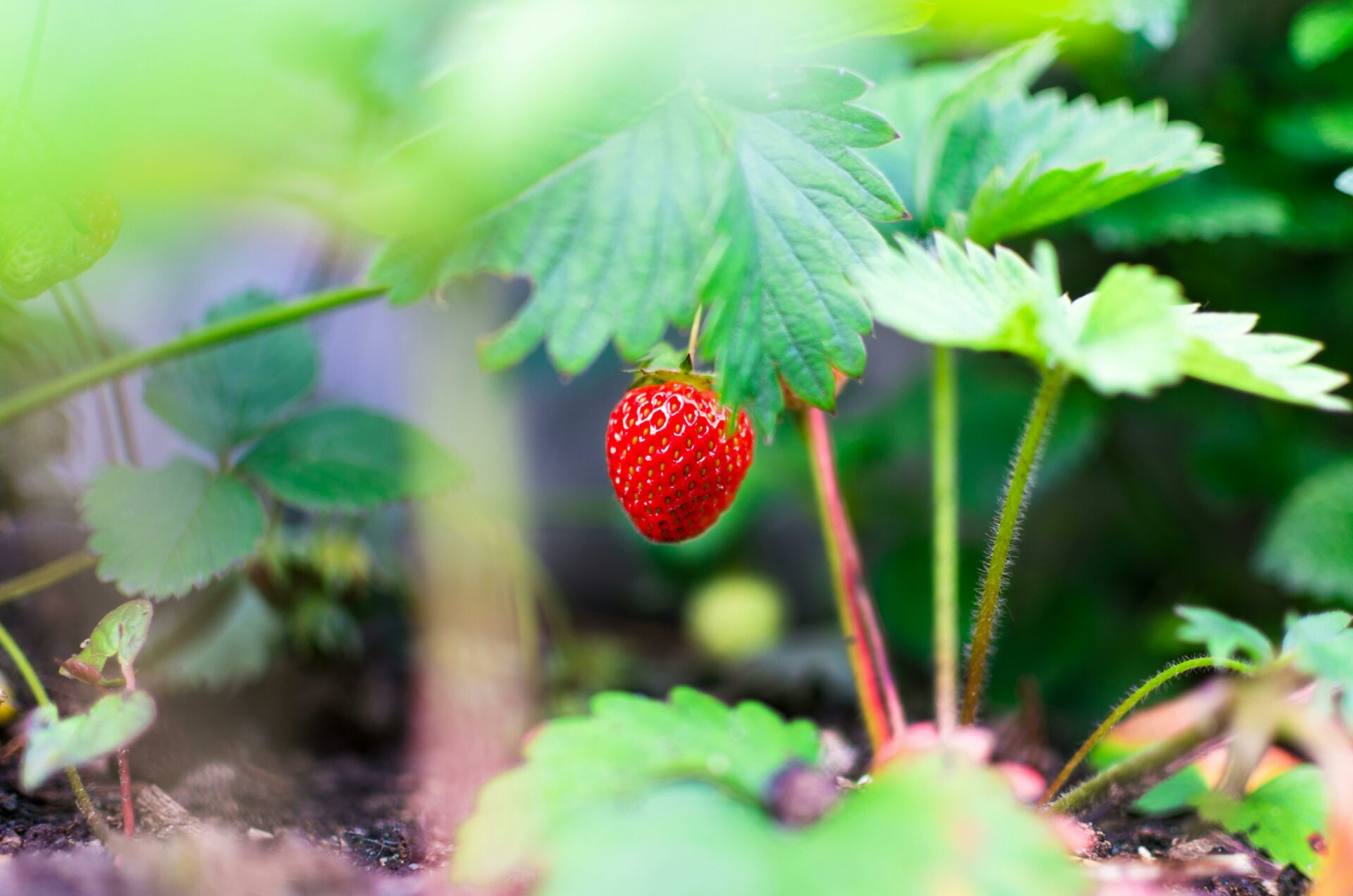Strawberries are one of the most recognizable and beloved fruits in the world, and their bright red color is a major part of their appeal. But why exactly is a strawberry red? Understanding the science behind why strawberries are red can help us appreciate this delicious fruit even more.Strawberries get their red color from a pigment called anthocyanin. Anthocyanin is a compound found in many fruits and vegetables and is responsible for giving them their red, purple, or blue hues. Strawberries are especially high in this pigment, which is why they have such a vibrant red color.
Why Do Strawberries Have Red Pigment?
Strawberries have a red pigment due to the presence of a compound called anthocyanin. Anthocyanins are water-soluble pigments that are found in many fruits and vegetables and are responsible for the bright colors of these foods. The level of anthocyanin in strawberries is greater than that of other fruits and vegetables, which is why they appear to be so much brighter and more vibrant. Anthocyanins also act as antioxidants, meaning they can help protect your body from damage caused by free radicals.
The amount of anthocyanin in strawberries can vary depending on the variety and growing conditions, but generally speaking, the darker the berry is, the higher its anthocyanin content will be. Strawberries also contain other pigments such as carotenoids and flavonoids, but it is usually the anthocyanin that gives them their beautiful red color.
Aside from adding color to food, anthocyanin has many health benefits as well. Studies have shown that consuming foods rich in anthocyanins can help reduce inflammation, decrease blood pressure, improve heart health, boost cognitive function, and even help reduce the risk of certain types of cancer. So not only do strawberries look great on your plate, but they’re also good for you too!
What Role Does the Sun Play in Strawberry Color?
Sunlight plays an important role in strawberry color. Strawberries need at least six hours of direct sunlight per day to develop their bright red hue. If they do not get enough direct sunlight, the strawberries will be smaller, less flavorful, and often pale in color. The more sun a strawberry plant receives, the brighter and sweeter the berries will be.
The amount of sunlight that a strawberry plant receives also affects its growth rate and overall health. A plant that gets too little or too much sun can experience stunted growth and may be more susceptible to diseases or pests. Too much sun can also cause the berries to burn, resulting in a bitter taste.
The color of strawberries is determined by the amount of anthocyanins they contain. Anthocyanins are compounds found in plants that produce red, purple, or blue pigments when exposed to sunlight. When strawberries are exposed to more intense sunlight, they produce more anthocyanins and become brighter in color.
In addition to affecting the color of strawberries, sunlight also has an impact on their nutritional content and flavor profile. UV rays from the sun break down some of the compounds found in strawberries, which can reduce their nutrient content and flavor over time. For this reason, it is important to harvest ripe strawberries as soon as possible after they have been exposed to adequate amounts of sunlight for optimal flavor and nutritional value.
In summary, sun plays a crucial role in determining strawberry color as well as its flavor profile and nutritional content. Strawberries need at least six hours of direct sunshine each day for optimal growth and health benefits; if they do not receive enough sun exposure, their fruits will be smaller and paler in color with less flavor than those grown with adequate sunlight exposure.
How Does Soil Affect Strawberry Color?
Soil is an important factor in strawberry color. Strawberries prefer soil with a pH of 6.0 to 6.5 and have been found to be more vibrant in colors when grown in acidic soils. Strawberries grown in basic or alkaline soils tend to be duller and less colorful than those grown in acidic soils. The presence of certain minerals like iron, magnesium, calcium, potassium, and phosphorus can also influence the color of the strawberry. Iron is especially important as it contributes to the color of the strawberry fruit, while phosphorus can affect both red and yellow pigments of the strawberry.
The amount of organic matter present in the soil also plays a role in strawberry color. Organic matter increases the availability of minerals that can influence the coloration of strawberries, such as iron and phosphorus. Additionally, organic matter helps to retain moisture which is essential for healthy growth of strawberries.
The amount of sunlight that strawberries receive can also affect their coloration; berries that are exposed to more sunlight tend to produce brighter colors than those exposed to less light. If strawberries are not exposed to enough light, they may not produce any pigmentation at all resulting in white fruit instead of red or orange.
Overall, soil quality has a great impact on how colorful strawberries will end up being; strawberries grown in acidic soils with high levels of organic matter and adequate light exposure will produce more vibrant colors than those grown under different conditions.
How Does Water Affect the Color of Strawberries?
Water plays an important role when it comes to the color of strawberries. Strawberries are known to be a bright red color, but this is only achieved when the fruit is properly hydrated. If a strawberry is not sufficiently watered, then its color will not be as vivid and may even appear dull or off-color. This is because water helps to bring out the natural pigments in strawberries that give them their characteristic red hue.
Strawberries also need adequate water to prevent them from becoming overripe or spoiled. Over-watering strawberries can lead to quick spoilage, so it’s important to maintain a balance between giving the fruit enough water and not overwatering it. If the strawberry does not get enough water, it will start to shrink and lose its vibrant color, while an over-watered strawberry will become mushy and its color will fade quickly.
The amount of water that a strawberry needs depends on factors such as temperature, humidity level, and soil type. In general, strawberries should be watered twice per week with about 1 inch of water each time. For optimal results, try to water the fruit in the morning when temperatures are cooler and there is less evaporation taking place. Additionally, mulching your strawberry patch can help keep moisture levels consistent and reduce stress on your plants during periods of drought or extreme heat.
Overall, providing your strawberries with adequate amounts of water is essential for keeping them healthy and ensuring they remain their bright red hue. By following these tips you can ensure that your strawberries stay vibrant and juicy all season long!

Different Types of Pigment in Strawberries
Strawberries are a popular fruit, but many people don’t know that they contain a variety of pigments. These pigments are responsible for the vibrant red colour of the strawberry, as well as its other hues. There are three main types of pigment present in strawberries: anthocyanins, carotenoids and flavonols.
Anthocyanins are the primary pigment found in strawberries and give them their red colour. These compounds are water-soluble and can be easily extracted from the fruit. In addition to imparting colour, anthocyanins have antioxidant properties and may even help prevent certain types of cancer.
Carotenoids give strawberries their orange and yellow tones. Carotenoids are fat-soluble pigments that can be found in a variety of fruits and vegetables. They have antioxidant properties like anthocyanins, but can also help protect against age-related vision loss and other degenerative eye diseases.
Finally, flavonols provide strawberries with their pinkish tinge. Flavonols belong to a larger class of compounds called flavonoids and have anti-inflammatory properties that can help protect against heart disease and stroke. Additionally, they may help protect skin from sun damage when consumed regularly.
In conclusion, there are three main types of pigment found in strawberries: anthocyanins, carotenoids and flavonols. Each type provides different benefits to our health when consumed regularly, so it’s important to ensure you’re getting enough of these pigments from your diet!
Health Benefits of Eating Red Strawberries
Red strawberries are packed with vitamins, minerals, and antioxidants that can provide a variety of health benefits. These sweet and juicy berries are a great source of vitamin C, an essential nutrient that helps protect against infection and aids in the absorption of iron. They also contain folate, fiber, magnesium, potassium, and other essential vitamins and minerals.
Red strawberries are also packed with antioxidants that help protect against oxidative damage caused by environmental pollutants, smoking, and stress. Antioxidants can reduce inflammation in the body which can help to reduce the risk of chronic diseases such as heart disease and cancer.
Research has shown that eating red strawberries may help to improve cholesterol levels by increasing levels of good cholesterol (HDL) while decreasing levels of bad cholesterol (LDL). This can help to reduce the risk of heart disease and stroke. Eating red strawberries may also help to regulate blood sugar levels which is important for people who suffer from diabetes or pre-diabetes.
Finally, red strawberries are a great source of fiber which can promote digestive health. Fiber helps to keep you feeling full longer which can aid in weight loss. Fiber also helps to keep your bowels regular and promotes healthy bacteria growth in your gut.
In conclusion, eating red strawberries is a great way to get your daily dose of vitamins, minerals, antioxidants, and fiber. These delicious berries offer numerous health benefits including reduced inflammation, improved cholesterol levels, regulated blood sugar levels, and better digestive health.
Types of Strawberries
Strawberries come in a variety of colors, shapes, and sizes. They can range from the deep red color of classic strawberries to yellow, pink, and even black. The color of a strawberry is determined by its variety and is an important factor when considering which type to purchase. Each type of strawberry has its own unique flavor and texture, making them ideal for different uses.
Red Strawberries
The most common type of strawberry is the red variety. Red strawberries are usually sweet and juicy with a bright flavor. These are perfect for eating fresh as part of a fruit salad or used as a topping on desserts such as cakes or ice cream. They can also be used in jams, jellies, syrups, and sauces.
Yellow Strawberries
Yellow strawberries are much less common than their red counterparts but they have their own unique flavor profile. These strawberries tend to be slightly tart with floral notes that make them perfect for blending into smoothies or adding a zesty twist to salads or desserts. They can also be cooked down into jams and preserves or added to sauces for an extra layer of flavor.
Pink Strawberries
Pink strawberries are milder in flavor than the other two varieties but they still have their own distinct taste that makes them great for snacking on fresh or cooking down into jams and jellies. They also make an attractive addition to fruit salads due to their vibrant pink hue.
Black Strawberries
Black strawberries are incredibly rare but they have an intense sweet-tart flavor that makes them ideal for baking into pies, cakes, tarts, and other desserts. They are also popular for making jams and syrups that can be enjoyed throughout the year.
Overall, there are many different types of strawberries available that vary in color, taste, texture, and uses. Whether you’re looking for something sweet or tart, there’s sure to be a type of strawberry that fits your needs perfectly!

Conclusion
Strawberries are a unique fruit due to their bright red color. This color is made possible by the combination of two pigment molecules, anthocyanin and pelargonidin. The amount of these molecule present in the strawberry’s outer layers determine its exact shade of red.
The color of strawberries also indicates their level of ripeness, which may be used as an indication of how sweet they will taste. As the strawberry ripens, the amount of anthocyanin and pelargonidin increases, resulting in a deeper red hue.
In conclusion, strawberries are red due to the presence of two specific pigment molecules, anthocyanin and pelargonidin. The amount of these molecules in a strawberry can indicate its level of ripeness and also influence how sweet it will taste.



